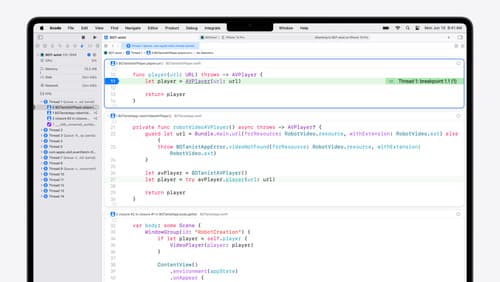In new synchronization what is the alternative of DispatchSemaphore?
Asked on 2024-08-17
1 search
In the new synchronization features introduced in Swift, the alternative to DispatchSemaphore is the use of low-level synchronization primitives such as atomics and mutexes. These are part of the synchronization module in Swift, which provides efficient, lock-free implementations for concurrent access. Atomics are generic over any type and should be stored in let properties for safe concurrent access. Mutexes, like atomics, should also be stored in let properties and accessed via the withLock method to ensure mutually exclusive access. This approach is part of Swift's effort to improve data race safety and provide more robust concurrency support.
For more details, you can refer to the session What’s new in Swift (28:43).

What’s new in Swift
Join us for an update on Swift. We’ll briefly go through a history of Swift over the past decade, and show you how the community has grown through workgroups, expanded the package ecosystem, and increased platform support. We’ll introduce you to a new language mode that achieves data-race safety by default, and a language subset that lets you run Swift on highly constrained systems. We’ll also explore some language updates including noncopyable types, typed throws, and improved C++ interoperability.

What’s new in Xcode 16
Discover the latest productivity and performance improvements in Xcode 16. Learn about enhancements to code completion, diagnostics, and Xcode Previews. Find out more about updates in builds and explore improvements in debugging and Instruments.

A Swift Tour: Explore Swift’s features and design
Learn the essential features and design philosophy of the Swift programming language. We’ll explore how to model data, handle errors, use protocols, write concurrent code, and more while building up a Swift package that has a library, an HTTP server, and a command line client. Whether you’re just beginning your Swift journey or have been with us from the start, this talk will help you get the most out of the language.
